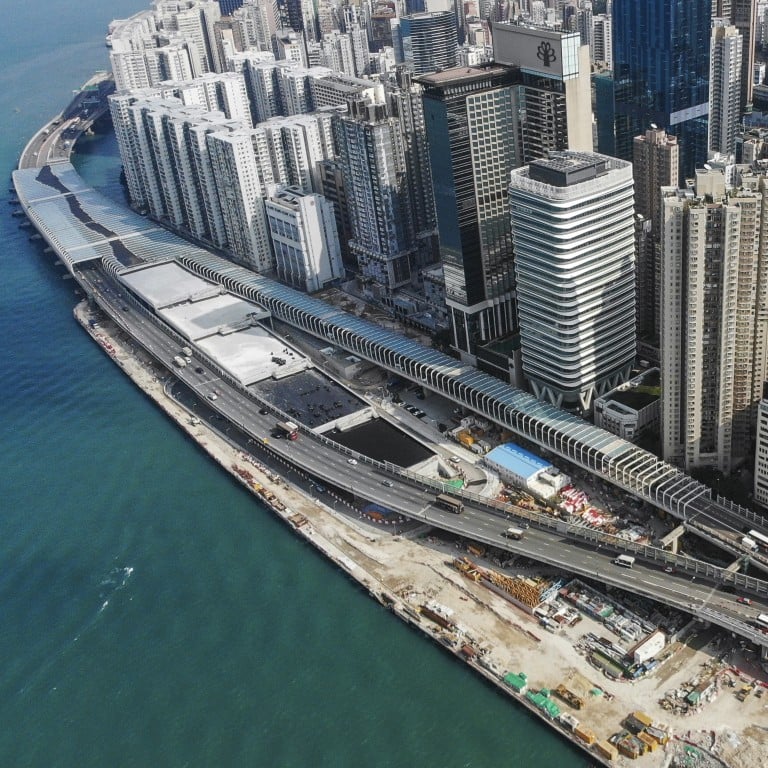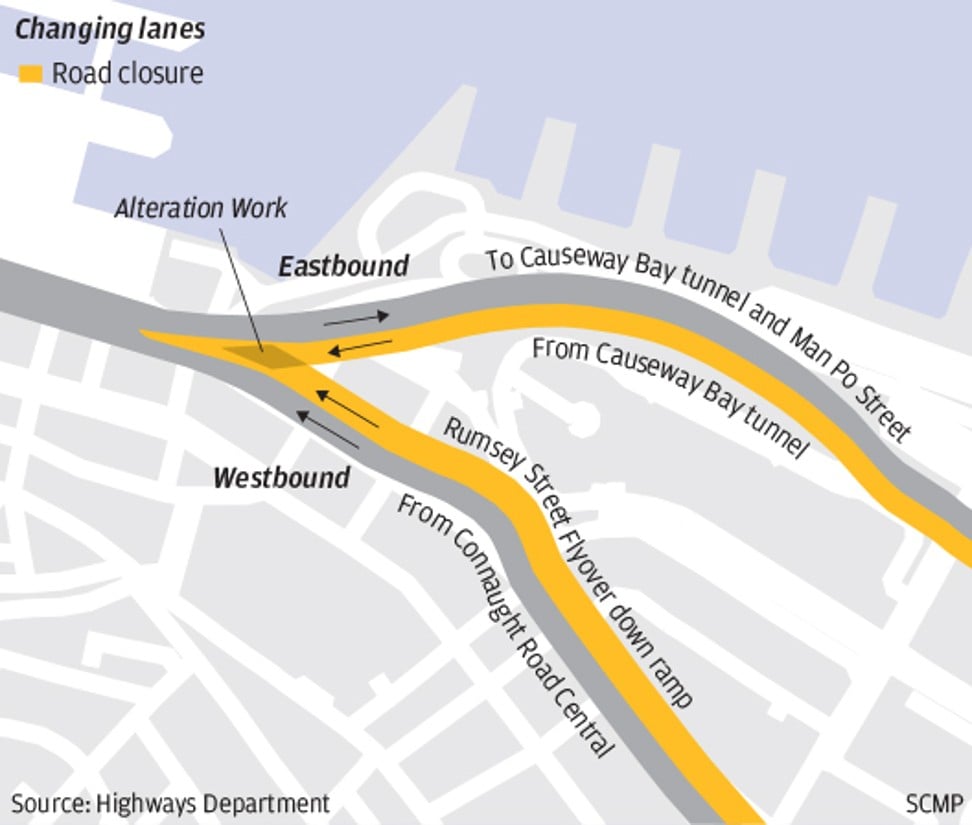
Central-Wan Chai Bypass in Hong Kong to open on January 20 after decade of delays and cost overruns
- Launch of HK$36 billion project will be in two phases, with tunnel section put into operation first
- Features include world’s largest air purification system
Hong Kong’s long-awaited HK$36 billion (US$4.6 billion) Central-Wan Chai Bypass will open to traffic on January 20 next year after about 10 years of construction plagued by delays and cost overruns.
The 4.5km link, comprising a flyover and a 3.7km tunnel, is expected to ease chronic congestion between North Point and Central. Authorities said it would cut travelling time from about half an hour to just five minutes.
Taxi drivers and commuters, who have lived with the construction site since 2009, welcomed Friday’s news. But some suspected the notorious Causeway Bay bottleneck on the Island Eastern Corridor would not go away.
“That’s very good, we have looked forward to the completion for a long time,” Hong Kong Taxi Owners Association chairman Wong Po-keung said. “Fewer traffic jams mean we can do more business.”
The opening was scheduled to commence in two phases, with the eastbound tunnel section to be in service first. With its launch, traffic lanes in the same direction along the Rumsey Street Flyover leading to Connaught Road Central will be closed.
3 companies working on Central-Wan Chai Bypass fined for noise and dirty water
This will be followed by the westbound carriageway, where work is still required to connect it with the Rumsey Street Flyover, which is expected to take about a month.
A commissioning ceremony for the bypass is set for January 19 in Central.
One commuter, who called himself Lawrence, expected to benefit from the new highway, because he drove between his home in Stanley and his office in Central twice a day at peak hours. With traffic jams, it takes him as long as 40 minutes, he said, but without traffic it takes 17 minutes.
“If I can get to my office within 25 minutes I am still happy,” the finance worker said. “But I am not sure if there will be any bottlenecks inside the tunnel when cars exit in Wan Chai for Central and other places.”
He added that the usual bottleneck at Causeway Bay, outside Victoria Park, was likely to remain as it was still a popular route with people heading to Causeway Bay and Happy Valley.
The Central-Wan Chai Bypass and Eastern Corridor Link project involves building a 4.5km pair of three-lane trunk roads and a 3.7km tunnel connecting the Rumsey Street Flyover in Central with the Island Eastern Corridor at North Point near City Garden.
It is expected to ease congestion on Gloucester Road, Harcourt Road and Connaught Road Central.
The tunnel construction ran into seepage problems at one stage, but the Highways Department said the issue was “minor” and had been rectified. It added that the tunnel had drainage features to address seepage, with a design aimed at limiting such risks.
‘No electronic road pricing until Central-Wan Chai bypass is finished’
The tunnel is equipped with an air purification system – the first in Hong Kong and the largest of its kind in the world – which can remove at least 80 per cent of harmful suspended particulates and nitrogen dioxide, two key roadside pollutants.
World Green Organisation chief executive Dr William Yu Yuen-ping welcomed the clean-air initiative.
“The pollutants will be shifted along with the traffic, to be diverted into the tunnel,” he said. But, he noted, “whether air quality will be better or not depends on the technology of filtering the pollutants and how they are treated”.
There are three ventilation buildings at each end of the tunnel and one at the eastern breakwater of the Causeway Bay typhoon shelter. The ventilation system can also discharge smoke from the tunnel.
Work began in 2009 and the entire project was expected to open in 2017, but it was delayed by budget overruns and technical difficulties.



